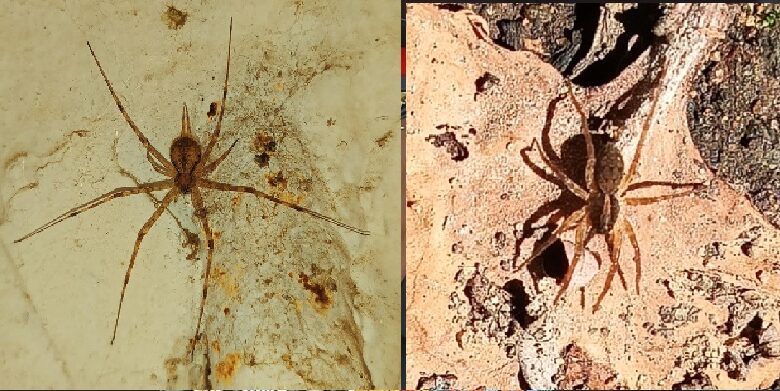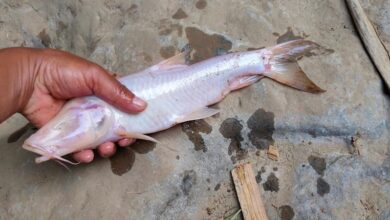SPIDERS ARE ESSENTIAL FOR OUR ECOSYSTEMS
News Mania Desk / Saikat Kumar Basu / 13th June 2025

Spider biodiversity is incredibly rich and diverse. Spiders have a long evolutionary history, dating back over 300 million years, and have evolved a wide range of adaptations for survival. Spider biodiversity is both vast and vital to ecosystem health, with more still to be discovered and understood. As of 2024, scientists have described over 50,000 species of spiders; but, experts estimate the actual number could exceed 120,000. New species are discovered every year.
Spiders are found on every continent except Antarctica. They inhabit nearly all terrestrial ecosystems—from rainforests and deserts to mountains and urban areas. Spiders belong to the order Araneae, which includes over 130 families and thousands of genera. This makes them one of the most diverse groups of predators in the animal kingdom.
Spiders play crucial roles as predators of insects and other small arthropods, helping control pest populations. Some have specialized behaviors like: Web-building (orb-weavers, cobweb spiders), Hunting (wolf spiders, jumping spiders), Trap-setting (trapdoor spiders, bolas spiders) etc.
Spider species vary widely in size, color, web structure, hunting strategy, and reproductive behavior. For example, jumping spiders have exceptional vision and display complex courtship dances. Mimic spiders resemble ants or even bird droppings to avoid predators or deceive prey.
Spiders are essential for maintaining ecological balance, supporting biodiversity, and promoting the health and stability of ecosystems. Spiders are crucial for biodiversity and ecosystem dynamics for several reasons. Spiders are top invertebrate predators in many ecosystems. They feed on a wide variety of insects, including agricultural pests and disease-carrying bugs like mosquitoes. This helps regulate insect populations naturally, reducing the need for chemical pesticides.
Spiders play a key role in the food web. They are both predators and prey: As predators, they keep herbivorous insect populations in check. As prey, they provide food for birds, reptiles, amphibians, and small mammals.
Spiders are sensitive to changes in their environment, they can be used as bioindicators to monitor ecosystem health, pollution levels, and the impact of habitat loss or climate change. Promoting Biodiversity of spiders contribute to the overall diversity of ecosystems. With over 48,000 known species, they occupy nearly every terrestrial habitat. Their presence supports a dynamic and interdependent web of life. Some spiders, like ground-dwellers, help break down organic material by preying on decomposers and aiding nutrient cycling, indirectly benefiting soil quality and plant health.
Conserving spider populations is essential due to their ecological importance as natural pest controllers and indicators of ecosystem health. Successful conservation of spiders requires a combination of research, habitat protection, education, and policy implementation. Protecting native habitats like forests, grasslands, wetlands, and caves. Reducing habitat fragmentation by creating wildlife corridors and minimizing urban sprawl. It is important to promote organic and sustainable agriculture to preserve spider-rich agroecosystems.
Limiting the use of chemical pesticide application is important as spiders are highly sensitive to toxins. Encouraging biological pest control methods where spiders are allies are significant steps to protect vulnerable spider populations. Conducting comprehensive surveys and biodiversity assessments to understand local spider fauna is necessary to understand the population dynamicsc of spider species. Developing long-term monitoring programs to track population trends and threats help us better in understanding the threats causing the endangerment of different spider species in specific ecosystems and habitats.
Busting superstotions, myths and unaccounted fears about spiders to reduce unnecessary killing. Promoting citizen science programs that involve the public in spider monitoring. Educating the public about spiders’ ecological roles and significance in various schools and communities. Including spiders in conservation planning and environmental policies. Protecting endangered species under local or national endangered species acts. Supporting environmental impact assessments that consider invertebrates.
Restoration of degraded habitats that can support diverse spider communities. Reintroducing native vegetation and reduce invasive species. Reducing overall greenhouse gas emissions to protect climate-sensitive spider habitats. Monitoring climate impacts on phenology, distribution, and prey availability.



Photo credit: Abhinav Gupta






